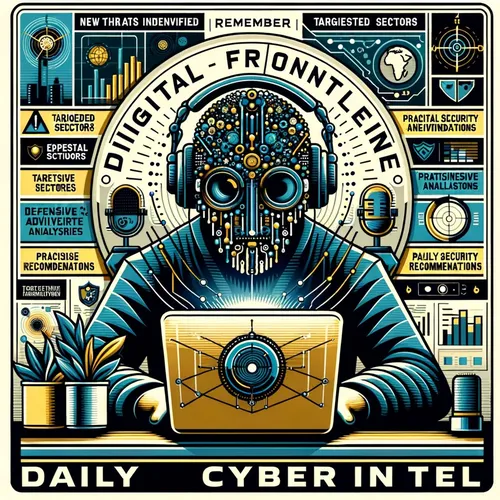China's Cyber Espionage Levels Up: Hijacking Web Traffic, Targeting Diplomats & Telecoms in Sneaky New Campaigns
- Author
- Quiet. Please
- Published
- Sun 31 Aug 2025
- Episode Link
- https://www.spreaker.com/episode/china-s-cyber-espionage-levels-up-hijacking-web-traffic-targeting-diplomats-telecoms-in-sneaky-new-campaigns--67573746
This is your Digital Frontline: Daily China Cyber Intel podcast.
I’m Ting, bringing you today’s Digital Frontline intel — and wow, the last 24 hours have been a cyber thriller, China style. Let’s skip pleasantries because fresh from Security Affairs, PRC-Nexus has leveled up espionage tactics, hijacking web traffic to target diplomats using clever deception campaigns. If you work with government, especially in roles that touch sensitive negotiations or foreign service, heads up: Their latest weapon of choice is browser-based hijacking mixed with tailored phishing payloads, and it’s a lot sneakier than the old-school attachments.
Telecoms didn’t get a break, folks. The FBI just tightened its focus on Salt Typhoon. That old attack campaign against U.S. telecoms? Turns out it was not only persistent but about three times nastier than anyone admitted before. FBI says backdoors were planted to eavesdrop silently for months on systems used by major providers. If your business rides on third-party comms infrastructure, double-check your segmentation and review logs now, or risk data exfil at gigabit speed.
Critical infrastructure continues to be a juicy target. Syteca’s global threat research says nearly 60 percent of attacks on energy and utilities link straight back to nation-state hacking groups, with China’s advanced persistent threats right at the top of the leaderboard. Why? Because these sectors run interconnected, vulnerable industrial control systems with patchy visibility. Listen up, water, oil, and waste operators: the real crown jewels aren’t what you think. Legacy hardware, remote gateways, exposed historian databases — attackers know your shortcuts better than your own IT department.
Defensively, the advice is getting sharper. Experts like Knapp and Couto from IndustrialCyber say every control system needs “what if it blows up” scenario planning. Use micro-segmentation, separate your automation zones, and obsessively map interdependencies. Ignore those conduits between systems at your peril — they’re like doors left open at a cyber beach party, and China’s attackers love a good landing spot.
Meanwhile, for all the AI buzz, President Trump’s executive action on artificial intelligence is generating both opportunity and confusion. Agencies must toe the line on AI risk management, but tech sector voices warn that data privacy and export policies are, in true Washington fashion, tangled with national champion business priorities. Michael Kratsios at the Office of Science and Technology Policy insists global adoption of the “U.S. AI technology stack” is non-negotiable for allies — which means if you’re working with AI and sensitive data, pay extra attention to compliance and provenance controls.
Practical recommendations for you, listeners:
Monitor for browser hijacks and persistent phishing aimed at admin accounts.
Patch legacy OT assets, map every system interface, and ban one-size-fits-all access.
Institute rigorous event logging, especially on telecom and cloud infrastructure.
Reject reactive incident response — up your game with tabletop exercises and live forensics drills for your teams.
For businesses handling critical functions, invest in proactive penetration testing, not just the annual checkbox audit.
That’s your dispatch from the cyber frontline, August 31st, 2025. Keep scanning, keep segmenting, and don’t let your digital crown jewels get pawned. Thanks for tuning in. Subscribe for more sharp analysis and outsmart the next attack. This has been a quiet please production, for more check out quiet please dot ai.
For more http://www.quietplease.ai
Get the best deals https://amzn.to/3ODvOta
